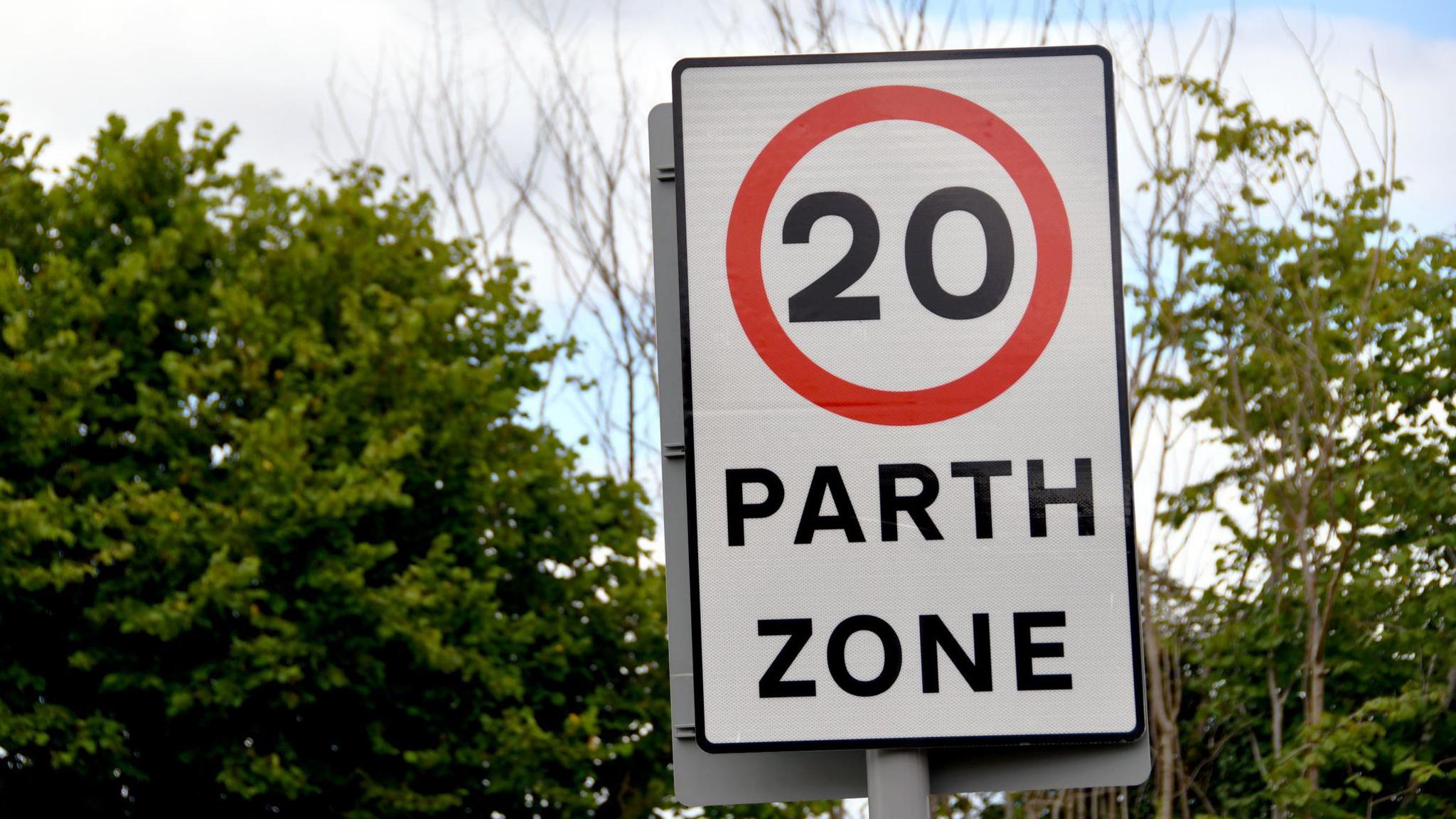Over 8,000 caught breaking 20mph limit on one road

This is the stretch of the A4102 in Merthyr Tydfil which has seen 8,000 offences, although the camera was out of action when we visited and appears to have been cut down
- Published
A quarter of motorists committing 20mph speed offences have been caught on just two roads in Wales, figures reveal.
Enforcement along the A4102 Swansea Road at Gellideg, Merthyr Tydfil - which links the A465 Heads of the Valleys road and the A470 - has caught more than 8,000 drivers in 10 months.
Freedom of information requests from BBC Wales show nearly 7,200 motorists were caught exceeding the 20mph limit on the A5104 at Pontybodkin near Penyffordd in Flintshire.
Welsh roads safety body GoSafe said slower speeds meant fewer people were "hurt or killed on our roads and it's encouraging to see people driving slower in our communities".
Merthyr: Locals 'can't see reason for 20mph limit'
The default speed limit in built-up areas in Wales was lowered from 30mph (48km/h) to 20mph (32km/h) last September.
The figures come as latest Transport for Wales data shows that more than half of motorists monitored across Wales were still keeping to under 24mph (39km/h).
We asked GoSafe - a partnership of the Welsh government, councils, and police - , external and police forces how many motorists were caught at 20mph monitoring points.
The map below shows the results from 120 enforcement locations, in the months from January to October and we got details of nearly 63,500 offences.
At Gellideg, 1,000 drivers were caught in October alone.
This section of the Swansea Road is among 20 being looked at by Merthyr Tydfil council , externaland which could eventually be switched back to 30mph, subject to consultation.
Other hotspots include Gors Avenue in Townhill, Swansea (3,700 offences), while five other stretches of roads in Flintshire are in the top 10.
Dyfed-Powys Police recorded 1,750 offences, with the most being 310 on the A482 in the village of Llanwrda, Carmarthenshire, ranking 30th road for most offences.
Gwent Police recorded a total of 984 offences at 23 different locations, the most being 130 at Pant Road, Newbridge.
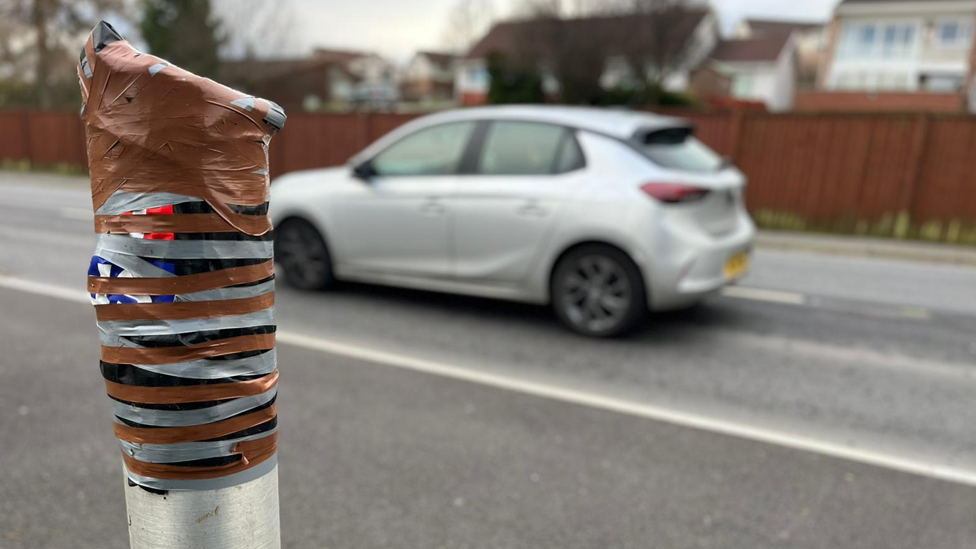
The camera is no longer working on the stretch of Swansea Road
On the road - BBC Wales journalist Gareth Bryer
There's confusion when I first arrive at the co-ordinates I have for the speed camera which has caught 8,000 drivers this year - there's no sign of it.
It's only when I ask a dog walker that we find out the camera mysteriously came down about three weeks ago, with a sports shop bag and some tape covering up the end of the pole.
No-one knows for sure what happened, but the suspicions of everyone I speak to is that it was sabotage. The camera, and the pole that was attached to it, was lying on its side next to the road for a couple of weeks before that too disappeared.
There's general shock that the camera has caught that many drivers.
But with a lack of regular 20mph signs and many using it as a major diversion for the Heads of the Valleys dual carriageway which runs parallel with the road, maybe it's no surprise that people are being caught.
'I forgot the camera was there'

Alan Dyment says there had been a speed camera for the 30mph speed limit previously after two serious accidents
Local resident Alan Dyment has been caught twice by the camera on the A4102 and has complained about it.
He believed the camera was first installed with a 30mph limit, after two fatal accidents a few years ago.
"I'm a bit annoyed - it's a straight road, if it was bendy maybe, but not for one like this. 20mph is very slow," he said.
"A neighbour of mine has been had three times. If you're over 24mph, you can get caught, but you can easily get to that. I'm looking at the speedometer and a lot of time, I have to put my foot on the brake."
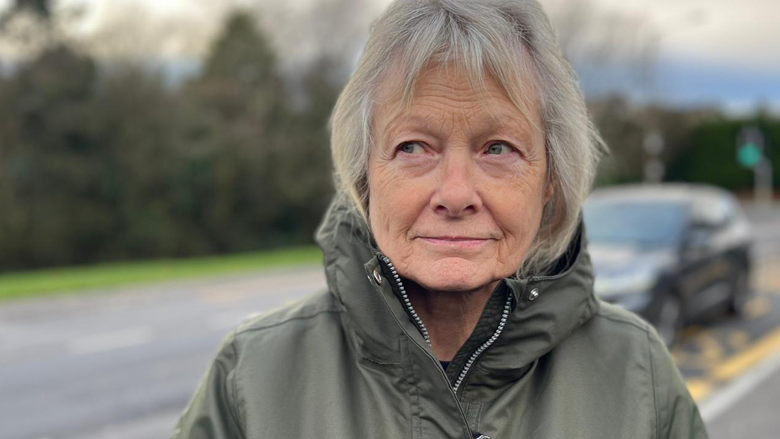
Cynthia Gaull says 30mph seems a more reasonable speed limit for the road
Another resident Cynthia Gaull said: "I can't see the reason for 20mph - 30mph was perfectly reasonable. There are no schools here, there are not even many houses.
"I drive slow anyway - I think 30 was OK."
Contractor Paul Chesterman said the road was a lot busier because of the new by-pass and drivers trying to avoid roadworks on it.
"I got caught - I was doing 26mph, I forgot the camera was there," he said.
Conor Milton, who is working locally, said: "I can understand why people are getting fed up, it's costing them a lot of money."
Meanwhile, in Flintshire, a senior councillor defended the fixed camera on the A5104 at Pontybodkin, which had caught 7,197 drivers in 10 months.
Councillor Glyn Banks, cabinet member for streetscene and transportation, said: "When you're talking about that one stretch, yes it sounds like a lot of motorists being caught but it's within 100m of a crossing to a children's park and a bowling club, mainly used by elderly people.
"Simply, people have to stick to the speed limits in place whether they like it or not, they're there for a reason and that's proven by a 20% drop in heartache for families across Wales," he told BBC Radio Wales Breakfast.
Enforcement action began in January, four months after the change in policy came into force.
New figures for 20mph offences in November were published this week and show another 12,000 motorists were caught exceeding the threshold.
That takes the total to 77,150 since the start of the year.
But compliance is good, with around 96% of those motorists who were monitored by GoSafe staying within the offence threshold.
Only 82 cases have led to prosecutions.
The average speed for an offence in November was just over 28mph, while the top speed a driver was caught at was 70mph.
What do other figures tell us?
Measuring how well motorists are complying with the 20mph limit rests on monitoring by Transport for Wales at 10 locations, external, from Llanrug in Gwynedd to Newport.
Nearly seven million vehicles at 43 monitoring points were recorded last summer.
It found nearly 53% were travelling at 24mph or under.
This compares with nearly 59% last winter. But before the change in speed limit, about 21% of vehicles were travelling at or below 24mph.
The average speed at these monitoring sites was 25.1mph - slightly faster than the speed recorded last winter (24.4mph).
It found 16% of vehicles monitored were travelling at or above 30mph, an increase from 14% of vehicles recorded last winter.
Early figures suggest that serious road casualties have dropped on 20mph and 30mph roads since the new policy came in, although it is too early to say whether this is a long term trend.
The 20mph policy came into force in September 2023, which meant just over a third of all Welsh roads - most of those that were formerly 30mph roads - now have the lower default limit.
The general aim is to improve road safety and bring about a reduction in speed in built-up areas.
But it provoked a backlash amongst some motorists, with petitions to reverse it.
The Welsh government promised a rethink on some roads, especially routes away from residential areas.
That review process is ongoing, with councils asking for submissions for roads which may see their speed limits changed back.
Related topics
- Published23 April 2024
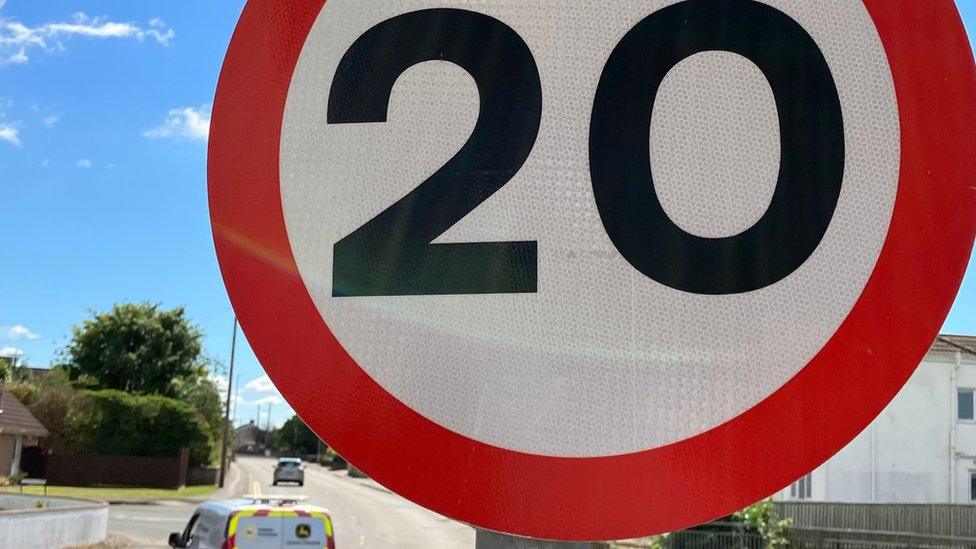
- Published14 September 2024
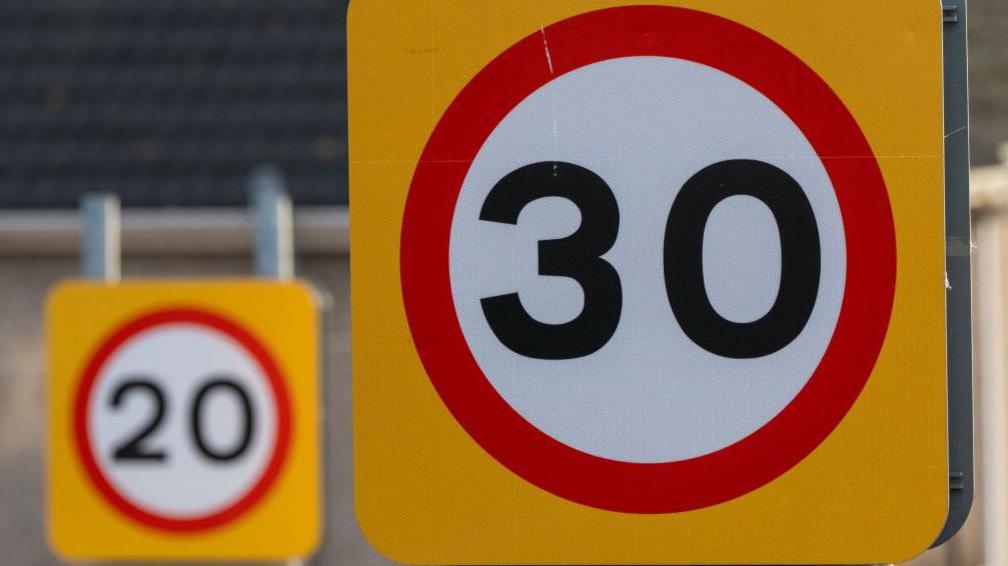
- Published1 August 2024
